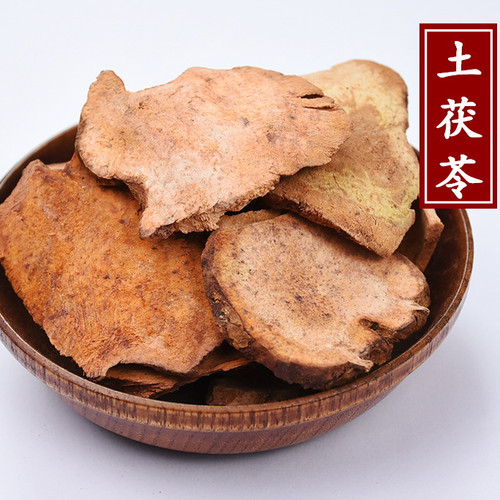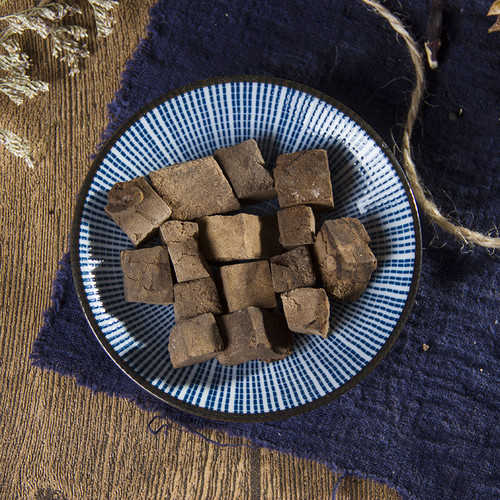Product Overview
Parts used: Dried rhizome and root
TCM category: Herbs that clear Heat and relieve Toxicity
TCM nature: Neutral
TCM taste(s): Sweet
Meridian affinity: Stomach Liver
Scientific name: Smilax glabra
Other names: Chinaroot, Sarsaparilla, Glabrous greenbrier
Use of smilax glabra roots (Tu Fu Ling) in TCM
Please note that you should never self-prescribe TCM ingredients. A TCM ingredient is almost never eaten on its own but as part of a formula containing several ingredients that act together. Please consult a professional TCM practitionner, they will be best able to guide you.
Preparation: Wash, soak in water, slice and dry
Dosage: 15 - 60 grams
Main actions according to TCM*: Expels Damp-Heat especially from the skin. Clears Heat and dispels Dampness. Dispels toxicity such as Syphilis.
Primary conditions or symptoms for which smilax glabra roots may be prescribed by TCM doctors*: Urinary tract infection Dysuria Leukorrhea Carbuncles Lymphadenitis Eczema Syphilis Lyme disease
Contraindications*: This herb should not be used by those with Yin Deficiency of the Liver and Kidney.
Common TCM formulas in which smilax glabra roots are used*:
For spirochete diseases such as syphilis and Lyme's disease combine smilax glabra roots with dandelions (Pu Gong Ying), honeysuckle flowers (Jin Yin Hua), liquorice (Gan Cao), dittany root bark (Bai Xian Pi) and purslane (Ma Chi Xian).
For Damp-Heat and toxic accumulation with joint pain combine smilax glabra roots with job's tears (Yi Yi Ren).
For Damp-Heat in the Liver and Gallbladder with symptoms of jaundice combine smilax glabra roots with dandelions (Pu Gong Ying).
For Damp-Heat with skin lesions combine smilax glabra roots with dittany root bark (Bai Xian Pi).
Key TCM concepts behind smilax glabra roots (Tu Fu Ling)'s properties
In Traditional Chinese Medicine (TCM), smilax glabra roots are plants that belong to the 'Herbs that clear Heat and relieve Toxicity' category. Herbs in this category are used to clear inflammatory and infectious conditions, referred to as 'Internal Heat' in TCM. This is why most of the herbs in this category will have both antibacterial and antiviral properties. In TCM one has too much 'Heat' in their body as a result of a deficiency of 'Yin' (which is Cold in nature, see our explanation on Yin and Yang) or, more commonly, an excess of Yang (Hot in nature). Herbs that clear Heat and relieve Toxicity treat the latter while, at the same time, removing infectious toxins from the body. As such they tend to be Cold or Neutral in nature.
As suggested by its category smilax glabra roots are plants that are Neutral in nature. This means that smilax glabra roots typically don't affect the balance in your body. Balance between Yin and Yang is a key health concept in TCM. Eating too many "Hot" (Yang) ingredients can lead to an imbalance whereby one has a Yang excess. The inverse is true as well: too many "Cold" (Yin) ingredients can lead to a Yin excess. The Neutral nature of smilax glabra roots means that you don't have to worry about that!
Smilax glabra roots also taste Sweet. The so-called "five elements" theory in Chinese Medicine states that the taste of TCM ingredients is a key determinant of their action in the body. Sweet ingredients like smilax glabra roots tend to slow down acute reactions and detoxify the body. They also have a tonic effect because they replenish Qi and Blood.
The tastes of ingredients in TCM also determine what organs and meridians they target. As such smilax glabra roots are thought to target the Stomach and the Liver. In TCM the Stomach is responsible for receiving and ripening ingested food and fluids. It is also tasked with descending the digested elements downwards to the Small Intestine. The Liver on the other hand is often referred as the body's "general" because it is in charge of regulating the movements of Qi and body fluids. It also takes a leading role in balancing our emotions.






